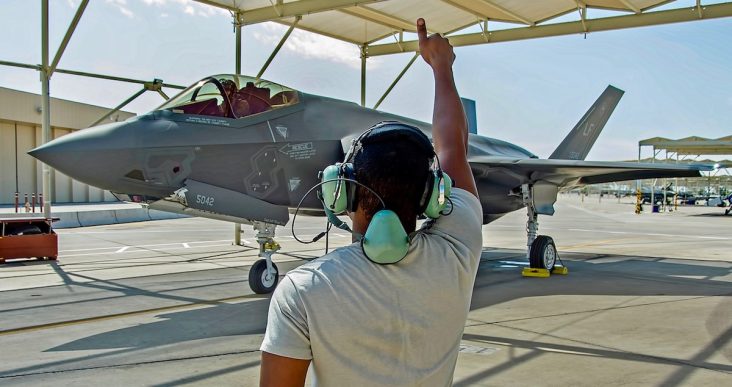‘Agile’ exercise in September to bring F-35s to Fort Smith
by August 29, 2024 4:57 pm 486 views

F-35 fighter jet
Eight U.S. Air Force F-35 fighter jets will roar into Fort Smith for a September exercise that follows the branch’s “Agile Combat Employment” (ACE) doctrine, and provides an early test of the ability of Ebbing Air National Guard Base to handle the advanced fighter platform.
The USAF is planning a Sept. 9 to Sept. 20 ACE exercise with the eight F-35s deployed from the 33rd Fighter Wing at Eglin Air Force Base in Florida. The exercise will involve 96 members of the 33rd, according to the Air Force.
The ACE doctrine is designed to allow the Air Force “to project airpower in a rapidly changing and contested environment,” and “represents a departure from traditional, static basing approaches, emphasizing the need for agility, adaptability, and resilience.” The September exercise also will be a test for Ebbing.
“This ACE exercise aims to validate the proof of concept for conducting F-35 pilot qualification and upgrade syllabus training, and to demonstrate the base’s capability to support sustained F-35 operations,” the Air Force noted in a statement.
Ebbing, home to the 188th Wing in Fort Smith and co-located with the Fort Smith Regional Airport, was selected in March 2023 by the U.S. Air Force to be the long-term pilot training center supporting F-16 and F-35 fighter planes purchased by Singapore, Switzerland, Poland, Germany, Finland and other countries participating in the Foreign Military Sales (FMS) program.
The original plan for the base to support 36 planes has been amended to accommodate 46 fighter jets. Recent estimates indicate the cost of the base when fully operational could be up to $1 billion and produce a $450 million annual economic impact for the region and state. Initial estimates are that 1,500 military personnel and family members will be associated with the new center once it is fully operational.
The Air Force did not have a specific number of 188th Wing personnel who will support the ACE exercise.
ACE DOCTRINE
The ACE doctrine was outlined in an Aug. 23, 2022 note from the U.S. Air Force Curtis LeMay Center for Doctrine Development and Education.
“From 93 air bases during World War II, the Air Force presently maintains 33 permanent overseas air bases, a 65% reduction. This reduction challenges the Air Force’s ability to project power and simultaneously concentrates friendly high value assets for potential adversary action,” according to an excerpt from the report.
A June 24, 2024 report by Congressional Research Service (CRS) noted a $538 million request in the recent fiscal year Air Force budget to support the ACE doctrine. The report also identified five core aspects of ACE – posture, command and control, moment and maneuver, protection, and sustainment.
“According to the Air Force, ACE is a ‘proactive and reactive operational scheme of maneuver’ to enable U.S. forces to ‘increase survivability while generating combat power,’” noted the CRS report. “The Air Force describes ACE as a response to recent geostrategic developments, including post-Cold War changes to U.S. global posture, advances in adversaries’ weapons systems, and domestic fiscal and political constraints. DOD has also characterized ACE as part of its overall approach to increased competition from Russia and China.”
The CRS report on ACE also noted: “Some analysts have characterized it as a ‘hub-and-spoke’ approach, with an enduring location (e.g., an existing U.S. or allied airbase) serving as a hub for a number of contingency locations (e.g., civilian airports, austere or standalone airstrips), between which aircraft can be shifted and from which missions can be launched.”
